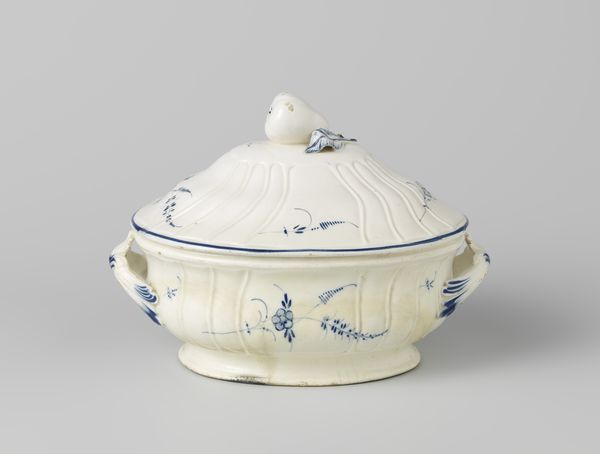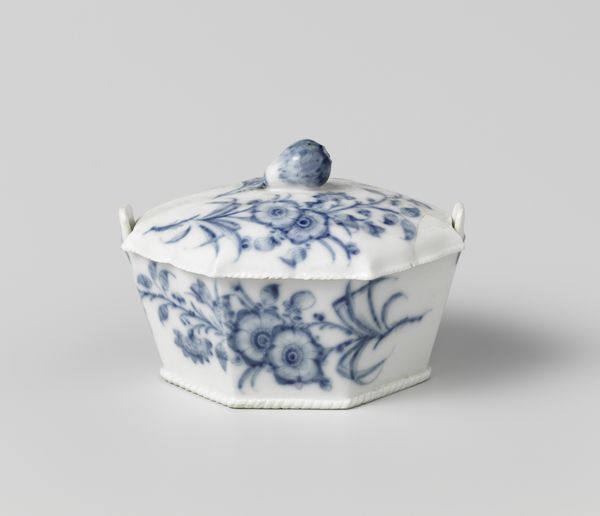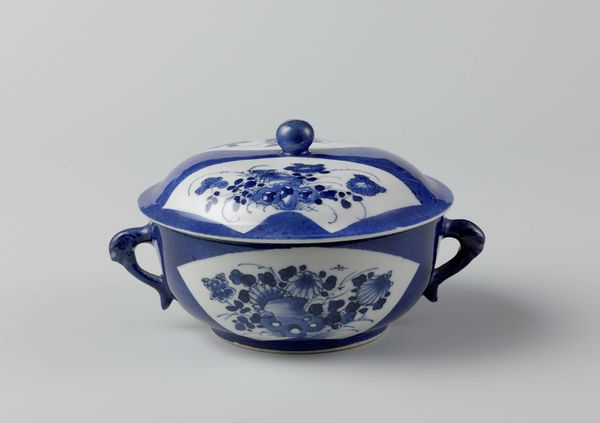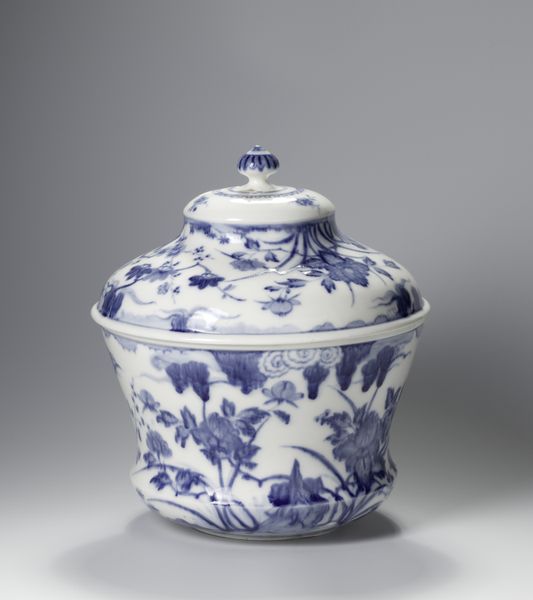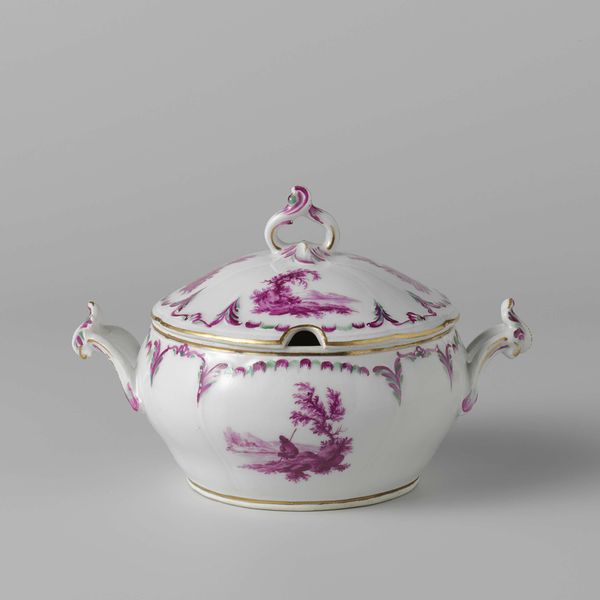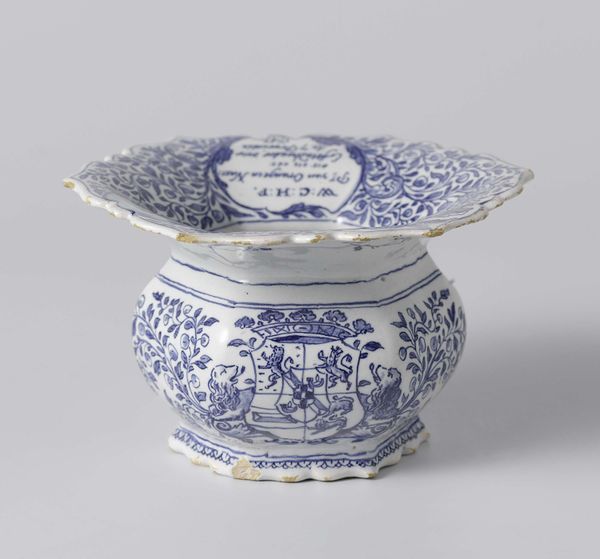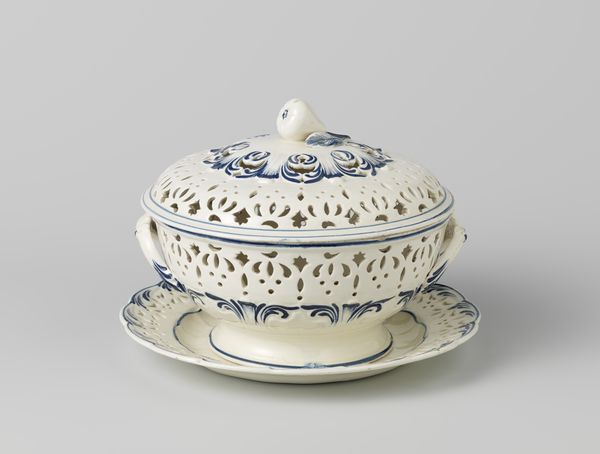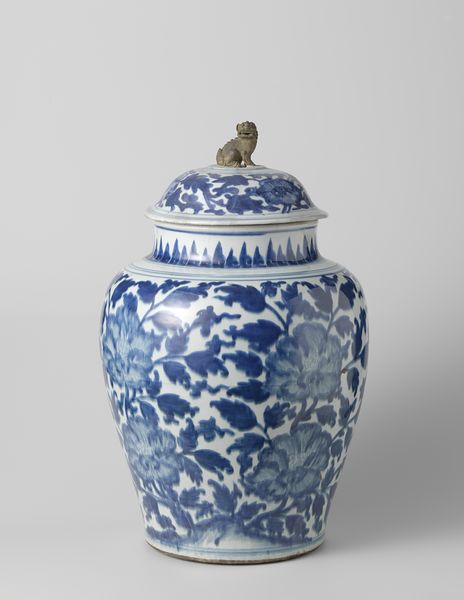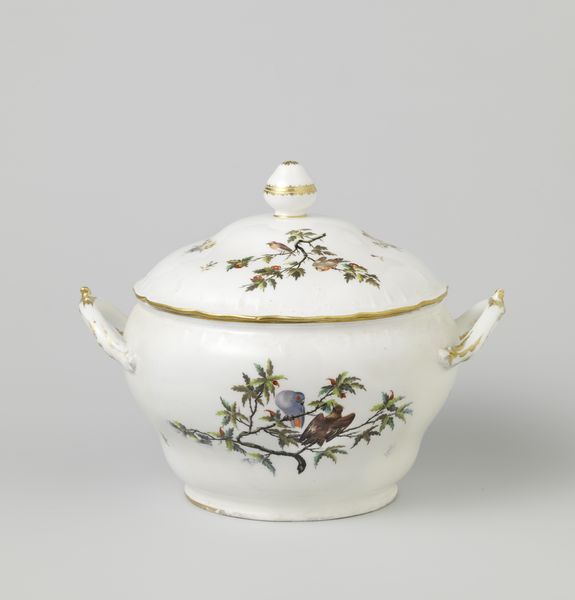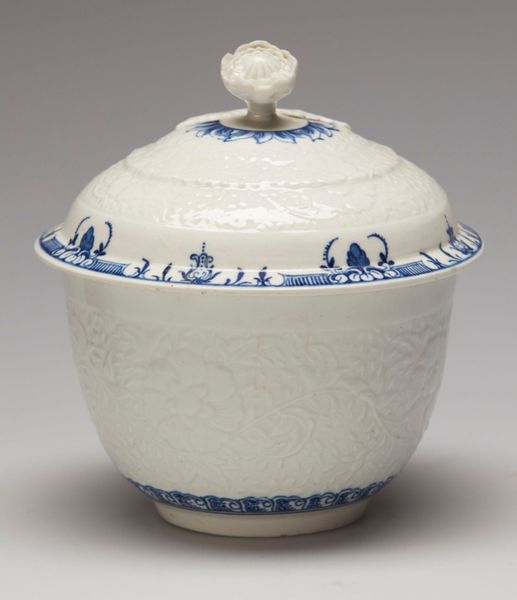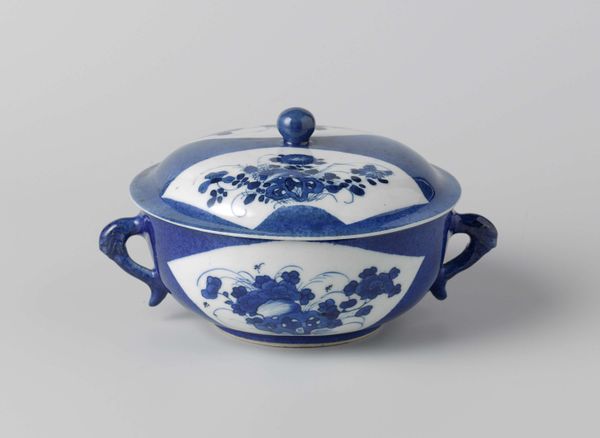
Dimensions: height 11 cm, diameter 26.5 cm
Copyright: Rijks Museum: Open Domain
Editor: This is "Deksel met blad- en bloemslingers," or "Lid with garlands of leaves and flowers," made between 1774 and 1784 by Loosdrecht. It’s a ceramic piece and part of the decorative arts collection here at the Rijksmuseum. I notice how delicate the blue floral pattern appears against the bright white ceramic. What connections can we make with history when viewing this piece? Curator: This piece speaks volumes about class, consumption, and colonialism in the late 18th century. Can you see how the delicate, almost fragile, design contrasts with what was actually happening in society? Editor: I see how it almost seems divorced from reality, like a fantasy object. Curator: Precisely! Rococo, the style, was favored by the aristocracy and upper-middle classes. Think about the social context: these classes were thriving because of colonialism and enslaved people, and the beautiful ceramic works served to conceal those uncomfortable truths behind decorative arts. Where do you see those hints of aristocracy at play? Editor: The meticulous details, the time it must have taken to create this—that labor speaks to leisure, and someone with wealth commissioning it. Curator: Yes, and the very existence of this ceramic hints at the global trade networks, because the knowledge and techniques for creating this piece relied on accessing resources and technologies primarily available via exploiting labor across colonized lands. This isn't just a pretty lid; it's a material testament to power structures of the time. What do you take away from understanding this connection? Editor: It completely changes how I see it. What seemed like just a lovely object now feels like a loaded artifact of a very complex and unjust past. Curator: Exactly! Art can become an important resource of re-framing social discourse by contextualizing and re-evaluating material objects through new, critical lenses.
Comments
No comments
Be the first to comment and join the conversation on the ultimate creative platform.

